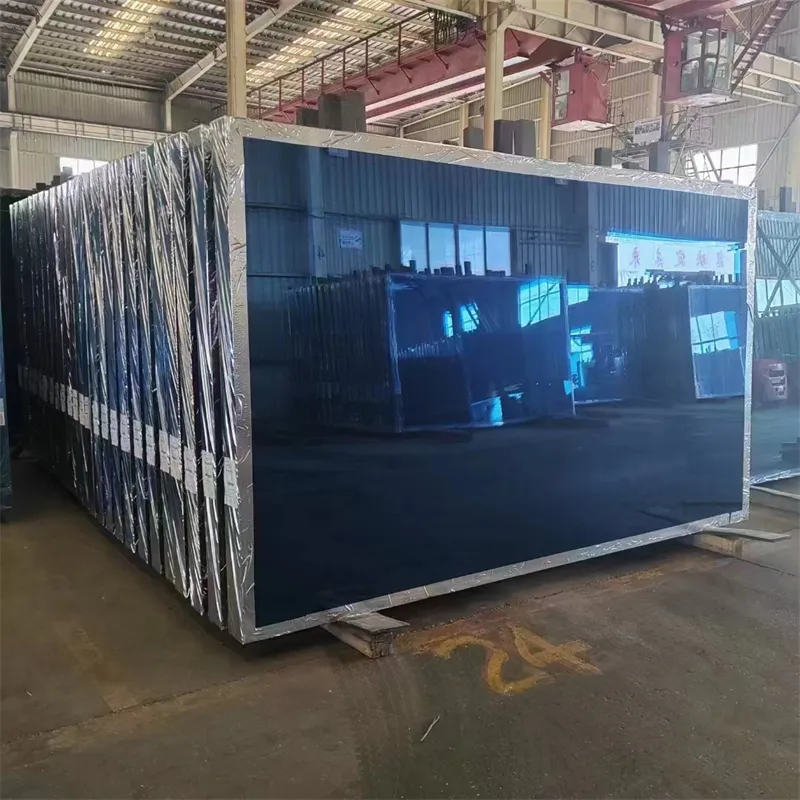Nov . 18, 2024 20:30 Back to list
Different Varieties of Frosted Glass for Architectural and Design Applications
Types of Frosted Glass An Overview
Frosted glass is a versatile and aesthetically pleasing material that has gained popularity in both residential and commercial settings. This type of glass is treated to achieve a translucent finish, allowing light to pass through while obscuring visibility. It combines functionality with elegance, making it a preferred choice for various applications. In this article, we will explore the different types of frosted glass and their unique characteristics.
One of the most common types of frosted glass is sandblasted glass. This technique involves using sandblasting equipment to etch the surface of the glass, creating a matte finish. The depth of the etching can vary, which allows for different levels of light diffusion. Sandblasted glass is popular in doors, windows, and partitions, providing privacy while still allowing natural light to illuminate the space. It can also be customized with patterns or designs, adding a unique touch to any interior decor.
Another widely used type of frosted glass is acid-etched glass. This process uses acid to create a smooth, frosted surface on the glass. Acid-etched glass is durable and resistant to scratching, making it ideal for high-traffic areas like offices and commercial buildings. The frosted finish of acid-etched glass can range from subtle to pronounced, depending on the desired effect. This type of glass is often used in shower enclosures, backsplash areas in kitchens, and glass paneling.
type of frosted glass

Laminated frosted glass is another option that combines safety with aesthetics. This type of frosted glass is made by sandwiching a layer of frosted glass between two sheets of safety glass, providing enhanced strength and resistance to shattering. Laminated frosted glass is often used in locations where safety is a concern, such as glass railings, skylights, and storefronts. Not only does it offer privacy, but it also adds a layer of security by holding shards together if the glass breaks.
Vinyl film frosted glass is a more budget-friendly option that allows users to achieve a frosted look without the cost of traditional frosted glass. This method involves applying a vinyl film to a clear glass surface, creating a frosted appearance. Available in various levels of opacity and finishes, vinyl film can be easily cut to fit any shape or size, making it a popular choice for DIY projects. Its versatility makes it ideal for windows, glass partitions, and decorative elements in homes and offices.
Lastly, smart frosted glass represents the intersection of technology and design. This innovative glass can change its opacity at the touch of a button, transitioning from transparent to frosted. Smart frosted glass is often used in conference rooms, privacy screens, and modern homes where flexibility is desired. By providing instant privacy, it optimizes space usage while maintaining a sleek, contemporary aesthetic.
In conclusion, frosted glass is available in various types, each with its distinct characteristics and applications. From sandblasted and acid-etched glass to laminated and smart glass, these options cater to diverse needs and preferences. Whether you are looking to enhance privacy, improve aesthetics, or incorporate safety measures, frosted glass offers a practical and stylish solution for any environment.
-
Safety and Style with Premium Laminated Glass Solutions
NewsJun.24,2025
-
Reinvents Security with Premium Wired Glass
NewsJun.24,2025
-
Premium Float Glass Line for Modern Architecture
NewsJun.24,2025
-
Low Emissivity Glass for Energy-Efficient Architecture
NewsJun.24,2025
-
High-Performance Insulated Glass Solutions for Modern Architecture
NewsJun.24,2025
-
Elevates Interior Style with Premium Silver Mirror
NewsJun.24,2025
Related PRODUCTS














